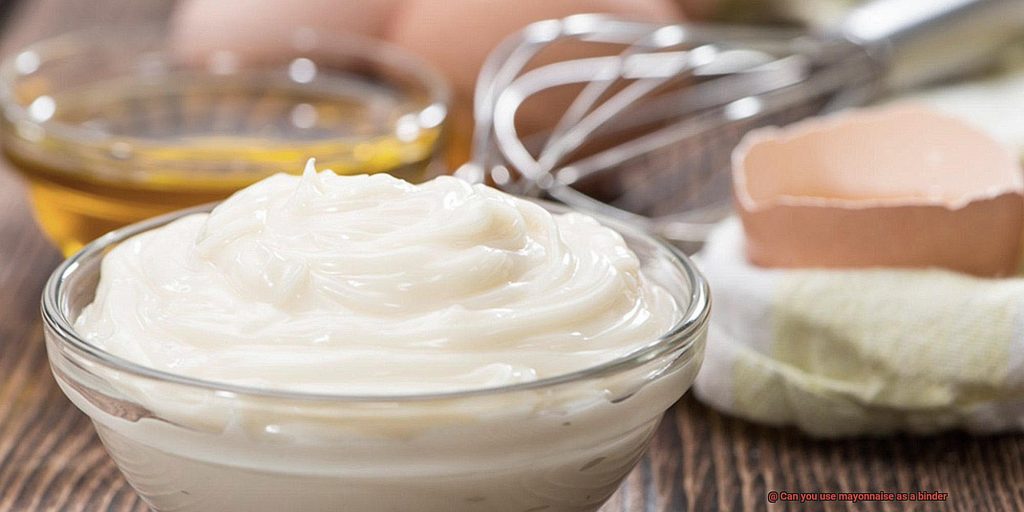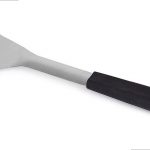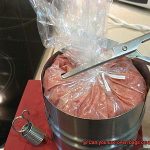Have you ever found yourself in the kitchen, cooking up a storm, only to realize that you’re out of eggs or bread crumbs, and your recipe calls for a binder? It’s a frustrating predicament that can leave even the most experienced cooks scratching their heads. But fear not. In your moment of desperation, have you ever looked in your fridge and seen a jar of mayonnaise, wondering if it could be a possible substitute?
The question of whether mayonnaise can be used as a binder in cooking is one that has sparked heated debates among food enthusiasts. Some swear by it, claiming that mayonnaise works wonders in holding everything together in dishes like meatloaf, burgers, and meatballs. Others scoff at the idea, labeling it as a culinary sin that belongs in the realm of amateur cooking.
But what’s the truth behind this controversial ingredient? Can mayonnaise really be used as a binder? In this blog post, we’ll explore the science behind binders in cooking and discuss whether mayonnaise is an adequate replacement for traditional binders like eggs and bread crumbs.
We’ll also dive into the pros and cons of using mayonnaise as a binder. Is it healthier than traditional binders? Does it affect the taste or texture of your dish? We’ll cover all these questions and more.
And if you’re feeling adventurous, we’ll share some unique recipes that showcase this ingredient’s versatility. From creamy macaroni salad to zesty chicken skewers – there’s no limit to what you can create with mayonnaise as your secret weapon.
So, buckle up and prepare to discover the truth about using mayonnaise as a binder – it might just surprise you.
Contents
What is Mayonnaise?
Mayonnaise is more than just a condiment – it’s a creamy, tangy sauce that has been a staple in kitchens around the world for centuries. This versatile sauce is made by slowly whisking oil, egg yolks, vinegar or lemon juice, and seasonings until they emulsify into a smooth, velvety texture.
One of the reasons mayonnaise is so popular is its ability to act as a binder in recipes like potato salad and tuna salad. Its rich flavor and high-fat content help hold ingredients together while adding a delicious creaminess. However, it’s important to note that mayonnaise should be stored properly to prevent spoilage since it contains raw egg yolks that can harbor bacteria if not refrigerated.
Mayonnaise can also be customized to your liking. You can make it at home using different oils and seasonings, or you can buy it pre-made at your local grocery store. But beyond its use as a condiment or binder, mayonnaise can also be used as a marinade for grilled meats and vegetables. Its emulsifying agents help keep ingredients together while adding flavor and moisture.
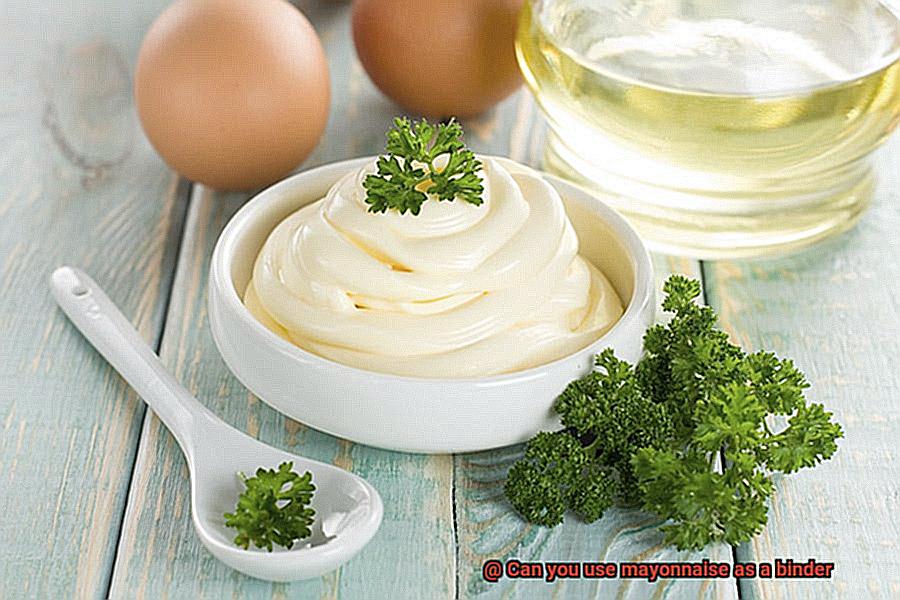
To use mayonnaise as a binder or marinade, simply coat your meat or vegetables with a thin layer of mayo before applying your seasoning or rub. You can even mix mayo with other ingredients like herbs, spices, or citrus juice for an added burst of flavor. Just be sure to use it in moderation, as its high-fat content can cause flare-ups on the grill and lead to burnt meat.
Benefits of Using Mayonnaise as a Binder
As an expert on the benefits of using mayonnaise as a binder, I can tell you that this versatile ingredient is not just for sandwiches anymore.
One of the biggest advantages of using mayonnaise as a binder is that it adds moisture and flavor to your dish. Made with oil and egg yolks, mayonnaise is packed with moisture and fat that can help keep your meat or vegetables juicy, tender, and full of flavor. Plus, its tangy and slightly sweet taste can enhance the flavors of other ingredients in your dish, making it more delicious.
But that’s just the beginning – mayonnaise also has a thick and creamy texture that makes it an ideal binding agent. It can help ingredients like breadcrumbs, ground meat, and vegetables stick together, resulting in a more cohesive and satisfying dish. Whether you’re making meatballs, hamburgers, or even a veggie burger, mayonnaise can be the secret ingredient that holds everything together.
Not only is mayonnaise a great binder, but it’s also a healthier option compared to other binding agents. With less cholesterol than eggs and fewer calories than breadcrumbs, mayonnaise can be a guilt-free addition to your cooking repertoire. And if you’re gluten intolerant, you’ll be happy to know that mayonnaise is gluten-free.
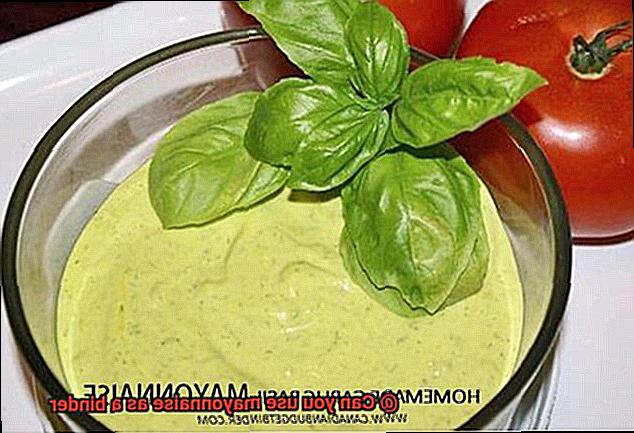
To sum up, using mayonnaise as a binder has many benefits. Here are some key ones to consider:
- Adds moisture and flavor to your dish
- Helps ingredients stick together
- Enhances the taste of other ingredients
- Is a healthier option compared to other binding agents
- Is gluten-free
How to Use Mayonnaise as a Binder
Mayonnaise is a versatile ingredient that can add moisture and flavor to your dishes while helping to keep your ingredients together. Here are five tips on how to use mayonnaise as a binder in your recipes:
Choose the Right Mayonnaise
When using mayonnaise as a binder, it’s essential to select the right type of mayo. Full-fat mayonnaise is the best option as it has a thicker consistency than low-fat varieties, which can be too runny. Additionally, it’s important to choose high-quality mayonnaise that is free from artificial flavors or preservatives.
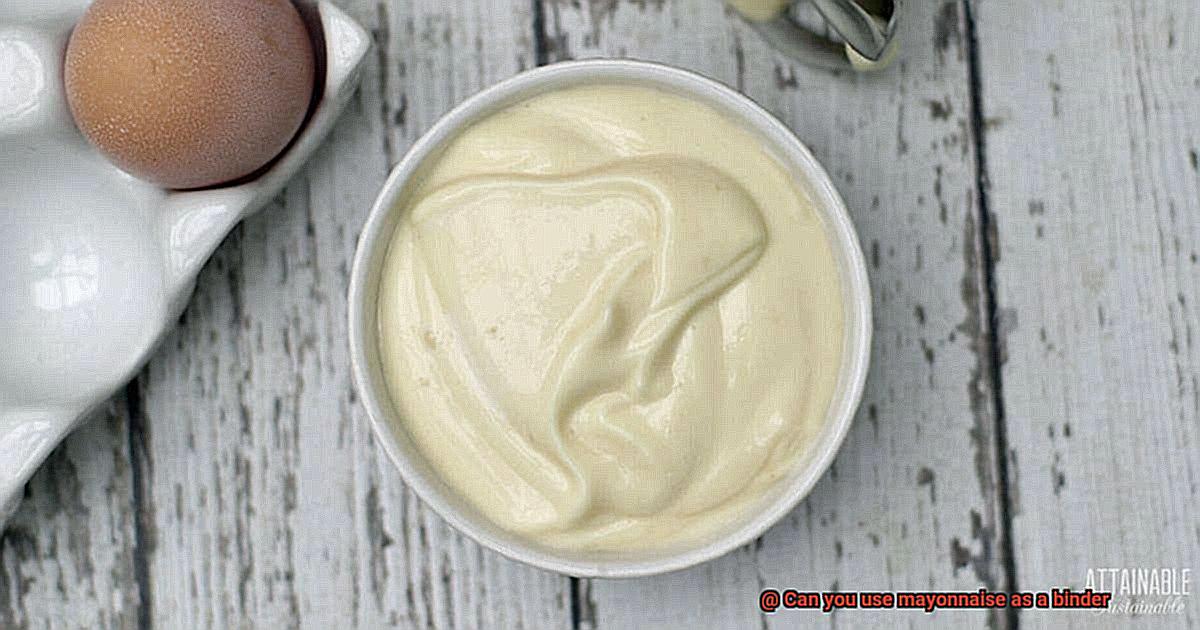
Mix Thoroughly
To ensure even distribution of the mayonnaise, mix it thoroughly with the other ingredients. This will help to prevent uneven cooking and ensure that your dish stays together during cooking.
Use in Moderation
While mayonnaise can add moisture and flavor to your dishes, it’s crucial not to overdo it. Too much mayonnaise can make your dish greasy or heavy, so use it in moderation.
Examples of Dishes
Mayonnaise can be used as a binder in various dishes, including meatloaf, burgers, fish cakes, roasted potatoes, and grilled vegetables. It adds a rich and savory flavor while helping to keep the ingredients together.
Consider Food Allergies
If you’re cooking for someone with food allergies to eggs or soybean oil (which are often found in commercial mayo products), using mayonnaise as a binder may not be an option.
Best Foods to Use Mayonnaise with
This versatile condiment can be used in countless ways, from adding moisture and flavor to binding ingredients together. As an expert on all things mayonnaise, I am here to share with you the best foods to pair with this creamy goodness.
Let’s start with seafood. Tuna salad is a classic dish that is elevated with the addition of mayonnaise. The creamy texture and tangy flavor of mayo help to bind the tuna together, making for a delicious sandwich or salad. Crab and shrimp are also perfect pairings for mayonnaise as a binder, adding a rich and savory flavor to these delicate seafood dishes.
Moving on to poultry, chicken salad is another classic dish that relies on mayonnaise for its creamy texture and flavor. Mayonnaise can also be used as a binder in chicken patties or meatballs, helping to keep the meat moist and tender. And for turkey burgers, mixing some mayo into the ground turkey before cooking can take your burger game to the next level.
Egg salad is another dish that benefits from the addition of mayonnaise. The mayo helps to bind the eggs together and adds flavor and creaminess. And let’s not forget about potato salad – another classic dish that often uses mayonnaise as a binder, along with other ingredients like mustard, pickles, and celery.
But did you know that mayonnaise can also be used in baked goods? Adding some mayo to cakes or quick breads can help keep them moist and tender while also adding richness and flavor.
When using mayonnaise as a binder, it’s important to choose the right type of mayo, mix it thoroughly with other ingredients, use it in moderation, and consider food allergies. With these factors in mind, you can experiment with your favorite dishes – from salads to meatloaf to baked goods – and see how this versatile condiment can take your cooking game to the next level.
Potential Pitfalls of Using Mayonnaise as a Binder
You might have considered using it as a binder for grilling. While this technique can add moisture and flavor to your meat, there are some potential pitfalls to consider.
Firstly, the high fat content in mayonnaise can be problematic. Using too much mayo can result in an overly greasy or oily texture, making it difficult to achieve a crispy outer layer on your grilled meat. To avoid this, be mindful of the amount of mayonnaise you use in your recipe.
Secondly, mayonnaise has a tangy taste that may not always complement the other flavors in your dish. If you’re using delicate ingredients like seafood or certain cuts of meat, the mayo could overpower the natural flavors and ruin the taste.
Thirdly, using mayonnaise as a binder can pose some food safety concerns. Since it contains raw egg yolks, there’s a risk of harboring harmful bacteria such as salmonella. To avoid any health risks, it’s essential to handle and cook your food properly.
Lastly, not all types of meat are suitable for pairing with mayonnaise as a binder. Some cuts and types of meat simply don’t go well with the flavor of mayo. Always consider your meat choice and whether mayo will enhance or detract from the natural flavors.
Alternatives to Using Mayonnaise as a Binder
Fear not. There are plenty of alternatives to this creamy condiment that can elevate your dish in both flavor and texture.
Greek yogurt is one popular substitute for mayonnaise. It boasts the same consistency and thickness as mayo, but with a tangy taste that can enhance any recipe. Use it in salads or as a dip for veggies.
If you’re looking for a healthy fat alternative, avocado is the perfect choice. Mash it up and use it as a binder in egg or tuna salad to create a deliciously creamy texture. Plus, who doesn’t love avocado toast?
For a nutty flavor, try using nut butters like peanut or almond butter as a binder. They give richness and creaminess to your dish while also providing protein. Another option is hummus, which can be used in veggie burgers or meatballs.
Silken tofu is another alternative for those with dietary restrictions. This neutral-tasting ingredient has a smooth texture that blends well with other ingredients, making it an ideal binder for dressings or sauces.
Tips for Getting the Most Out of Your Marinade or Rub
Grilling is one of the best ways to cook meat and vegetables, but using marinades and rubs can take your dishes to the next level. To make the most out of your marinade or rub, here are some tips you should follow.
Timing is Key
Marinades and rubs need time to work their magic on the meat. Over-marinating can make the meat mushy, while under-marinating won’t allow enough time for flavors to penetrate. For tougher cuts of meat, marinate them for at least 4 hours and up to 24 hours. Delicate meats like fish and chicken only need 30 minutes to 2 hours.
Keep it Simple
It’s easy to get carried away with adding too many ingredients to your marinade or rub. But too many flavors can mask the taste of the meat itself. Stick to a few key ingredients that complement each other.
Coat Evenly and Thoroughly
Make sure you coat the meat evenly and thoroughly with your marinade or rub. Use your hands to massage the mixture into every part of the meat, ensuring maximum flavor in every bite.
Use a Ziplock Bag or Shallow Dish
Use a ziplock bag or shallow dish for marinating your meat. This makes it easier to turn the meat and ensure that all sides are coated evenly. For rubs, pat it onto the meat firmly so it sticks.
Try Mayonnaise as a Binder
Mayonnaise can act as a binder for grilled meats and vegetables. It keeps the meat moist and tender while also adding flavor and creating a crispy crust. Simply coat the meat or vegetable with a thin layer of mayo before applying your seasoning or rub.
Let Meat Rest After Grilling
Letting your meat rest for a few minutes after grilling is essential. This allows juices to redistribute throughout the meat, making it more tender and flavorful.
7EfWhnJ2d90″ >
Conclusion
In conclusion, the age-old question of whether mayonnaise can serve as a binder in cooking has been the subject of much debate among food enthusiasts. However, after delving into the science behind binding agents and weighing the pros and cons of using mayonnaise, it’s safe to say that this beloved condiment can indeed be used as a substitute for traditional binders like eggs and bread crumbs.
Mayonnaise boasts several benefits as a binding agent. It adds moisture, flavor, and creaminess to dishes while helping ingredients stick together. Its thick and creamy texture makes it an ideal choice for ensuring that your ingredients stay put. Furthermore, using mayonnaise as a binder is a healthier option than other alternatives since it contains less cholesterol and fewer calories.
Despite its advantages, there are some potential pitfalls to keep in mind when using mayonnaise as a binder. Its high-fat content can make meat greasy or oily, while its tangy taste could overpower more delicate flavors. There’s also a risk of harboring harmful bacteria like salmonella if not handled properly.
Thankfully, there are plenty of alternatives to using mayonnaise as a binder. Greek yogurt, avocado, nut butters, and silken tofu are all excellent options worth considering. Additionally, incorporating marinades and rubs into your grilling routine can add flavor and create tender meat without relying on binders.
All things considered, using mayonnaise as a binder is an excellent way to add moisture and creaminess to your dishes while keeping everything together. Just remember to use it in moderation and handle it with care to avoid any health risks.

